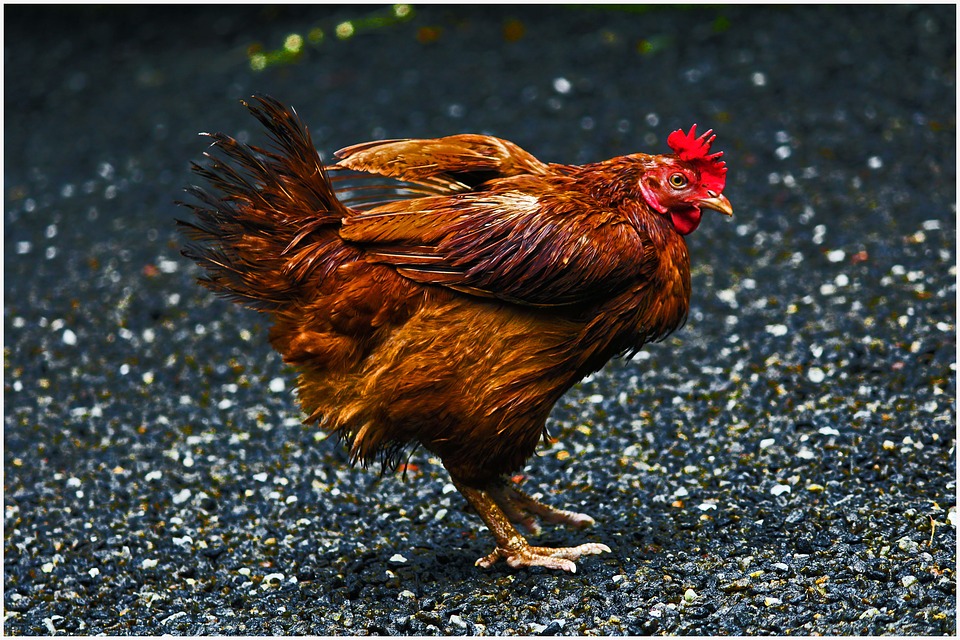
Introduction
Welcome to our comprehensive guide on one of the sweetest aspects of pregnancy nutrition: berries. Whether you’re reaching for a handful of juicy blueberries or savoring the tang of fresh raspberries, navigating the berry aisle during pregnancy can be both delightful and daunting. This guide, crafted through AI-driven analysis and synthesized from various medical sources, is here to illuminate the path.
But first, a crucial note: while we delve into the vibrant world of berries and their impact on pregnancy, it’s essential to remember that this guide is not a substitute for professional medical advice. We strongly advise consulting healthcare professionals for personalized guidance tailored to your unique pregnancy journey.
Now, let’s unravel the berry conundrum: Are they the superfoods of pregnancy, or do they harbor hidden risks? How can you safely incorporate them into your diet for maximum benefit? This guide is an amalgamation of research, expert insights, and practical tips, serving as your go-to resource for all things berry during these vital nine months. Get ready to embark on a berry-informed journey through your pregnancy.
The Nutritional Power of Berries in Pregnancy
Embarking on the pregnancy journey brings a heightened focus on nutrition, and berries stand out as nutritional gems in this critical period. Bursting with an array of vitamins, minerals, and antioxidants, berries are more than just a sweet indulgence; they are a powerhouse of nutrients essential for both maternal health and fetal development.
- Vitamin C Richness: Berries, especially strawberries and blueberries, are high in vitamin C. This vital nutrient is not only key for the immune system of both mother and baby but also crucial for the development of the baby’s bones, teeth, and connective tissues.
- Folate for Fetal Development: Berries like strawberries and raspberries are good sources of natural folate. This B vitamin is essential for the baby’s neural tube development and helps prevent birth defects, making it a critical component for early pregnancy diets.
- Fiber for Digestive Health: The fiber content in berries, particularly in raspberries and blackberries, supports digestive health. This is particularly beneficial as many pregnant women face issues like constipation due to hormonal changes.
- Antioxidants Galore: Berries are loaded with antioxidants, including flavonoids and anthocyanins. These compounds combat oxidative stress, reducing the risk of pregnancy complications like preeclampsia and gestational diabetes.
- Iron Absorption: The vitamin C in berries enhances iron absorption, a vital mineral that plays a key role in preventing anemia during pregnancy.
Incorporating a variety of berries into your diet can thus offer a spectrum of benefits, supporting not just the physical health but also the overall well-being of both mother and baby. However, it’s not just about what berries can do for you – it’s also important to understand and manage the risks associated with them during pregnancy. In the next section, we’ll explore how to balance these benefits with potential risks to ensure a safe and healthy pregnancy journey.
Balancing Benefits with Risks
While berries are undeniably beneficial for pregnancy, it’s crucial to balance these advantages with awareness of potential risks and how to mitigate them.
- Allergy Awareness: Allergies to certain berries, though rare, can occur. If you have a known berry allergy, it’s safest to avoid those varieties during pregnancy to prevent any adverse reactions.
- Pesticide Concerns: Many berries, such as strawberries, often rank high on the “dirty dozen” list for pesticide residue. Opting for organic berries can significantly reduce exposure to these potentially harmful chemicals.
- Managing Foodborne Illness Risks: Berries can sometimes be a source of foodborne illnesses due to bacteria like Salmonella or E. coli. Pregnant women, with their altered immune systems, should be particularly cautious. Washing berries thoroughly under running water can help minimize this risk.
- Portion Control and Moderation: Although berries are nutritious, overconsumption can lead to issues like bloating or diarrhea. It’s important to consume them in moderation as part of a balanced diet.
- Medical Consultation for Gestational Diabetes: Berries, despite their lower sugar content, still contain carbohydrates. For those managing gestational diabetes, consulting a healthcare provider about appropriate portion sizes and frequency of consumption is essential.
By understanding and addressing these risks, you can enjoy the nutritional benefits of berries during pregnancy safely and responsibly. In the following section, we will delve into specific research findings and expert opinions on the impact of berry consumption during pregnancy.
Berries and Pregnancy Health: What Research Says
Diving into the scientific and medical community’s perspective provides a deeper understanding of how berries impact pregnancy. Here’s what research and expert opinions reveal:
- Scientific Studies on Berries: Extensive research indicates that the antioxidants in berries, such as anthocyanins in blueberries, play a crucial role in preventing cellular damage and reducing inflammation, which is vital for a healthy pregnancy. Studies suggest these antioxidants help ward off pregnancy complications like preeclampsia and gestational diabetes.
- Expert Opinions on Nutritional Benefits: Nutritionists and healthcare professionals emphasize the importance of berries in pregnancy diets due to their high content of essential vitamins, minerals, and fiber. These nutrients support various aspects of fetal development, from bone and teeth formation to neural tube development.
- Managing Pregnancy Symptoms: Berries are also known for their role in alleviating common pregnancy symptoms. Their fiber content can ease constipation, and the natural sugars provide a healthy energy boost, combatting fatigue.
- Blood Sugar and Blood Pressure Control: Certain berries have been recognized for their ability to regulate blood sugar and blood pressure levels, crucial for pregnant women, especially those at risk of or managing gestational diabetes and hypertension.
- Recommendations from Medical Institutions: Leading health organizations and pregnancy health clinics often include berries in their recommended diet plans for pregnant women, highlighting their nutritional value and potential health benefits.
The consensus in the medical and scientific community underscores the significant benefits of including berries in a pregnancy diet. However, it’s also clear that these benefits are maximized when berries are consumed as part of a balanced diet, tailored to individual health needs and conditions. In the next section, we’ll explore practical ways to incorporate berries into your pregnancy diet.
Incorporating Berries into Your Pregnancy Diet
Incorporating berries into a pregnancy diet can be both delightful and beneficial. Here’s how to do it safely and creatively:
- Diverse Berry Selection: Include a variety of berries like blueberries, strawberries, raspberries, and blackberries to benefit from their different nutritional profiles.
- Healthy Berry-Based Recipes: Incorporate berries into smoothies, yogurts, or salads. You can also use them as healthy toppings on oatmeal or whole-grain pancakes.
- Snacking on Berries: Berries make for a convenient and healthy snack. Keep a mix of washed berries handy for a quick, nutritious bite.
- Mindful Berry Portions: While berries are nutritious, they should be consumed in moderation. Balance your diet with other fruits and vegetables.
- Safe Berry Consumption Practices: Always wash berries thoroughly under running water to minimize the risk of foodborne illnesses. If possible, choose organic berries to reduce pesticide exposure.
- Consulting with a Nutritionist: If you have specific dietary needs or health conditions like gestational diabetes, consulting with a nutritionist can help tailor berry consumption to your unique requirements.
By thoughtfully incorporating berries into your pregnancy diet, you can enjoy their taste and health benefits while ensuring safety and variety. In our next section, we will discuss the limitations of berry consumption during pregnancy and how to approach them.
Understanding the Limitations
While berries offer a plethora of benefits during pregnancy, it’s essential to understand and respect their limitations to ensure a healthy balance:
- Risk of Overconsumption: Consuming large quantities of berries can lead to digestive issues like bloating or diarrhea. It’s crucial to enjoy them in moderation.
- Blood Sugar Considerations: For women with gestational diabetes, even the natural sugars in berries require monitoring. Portion control and regular blood sugar checks are advised.
- Allergic Reactions: Be alert to any signs of allergic reactions, especially if you have a history of food allergies.
- Pesticides and Contaminants: While washing berries reduces the risk of contaminants, it doesn’t eliminate it completely, particularly with non-organic produce.
- Nutritional Imbalance: Relying too heavily on berries can lead to nutritional imbalances. They should complement, not replace, other essential food groups in your diet.
Recognizing these limitations is key to enjoying the benefits of berries during pregnancy safely. In the next section, we will hear from experts on their views regarding berry consumption during this crucial period.
Expert Opinions and Medical Advice
Gleaning insights from medical experts provide a well-rounded view on berry consumption during pregnancy:
- Nutritionists’ Recommendations: Many nutritionists advocate for including berries in a pregnancy diet, citing their rich vitamin and antioxidant content. They emphasize the role berries play in fetal development and maternal health.
- OB/GYN Perspectives: Obstetricians and gynecologists often recommend berries for their folate content, crucial for preventing neural tube defects. They also advise on portion control and the importance of a varied diet.
- Potential Allergy Considerations: Allergists remind that while berry allergies are rare, they can occur. They suggest introducing berries gradually and monitoring for any adverse reactions.
- Dietitians on Balancing Diets: Dietitians stress the importance of incorporating berries as part of a balanced diet, ensuring that pregnant women receive a spectrum of nutrients from various food sources.
- Pediatricians on Long-term Benefits: Pediatricians note the long-term benefits of a nutrient-rich diet during pregnancy, including berries, for the baby’s health and development.
Combining these expert opinions offers a comprehensive understanding of how best to include berries in a pregnancy diet, balancing enjoyment with health and safety. In our conclusion, we’ll wrap up the key takeaways from this guide.
Conclusion
In conclusion, berries are a nutritional treasure trove for pregnant women, offering a host of benefits from essential vitamins and minerals to vital antioxidants. However, like any aspect of pregnancy nutrition, they come with caveats. Moderation, awareness of potential allergies, and attention to food safety are key to harnessing their benefits. This guide, synthesizing AI-driven analysis with expert opinions, underscores the importance of a balanced approach. Remember, every pregnancy is unique, and dietary choices should align with individual health needs. We encourage expectant mothers to engage with healthcare professionals for personalized advice, ensuring a nourishing and safe pregnancy journey. Your feedback and experiences with berries during pregnancy are invaluable – feel free to share your stories or questions, and join us for more insightful discussions on pregnancy nutrition.
10 FAQs on Berries and Pregnancy
- Can eating berries during pregnancy improve my baby’s health? Yes, berries are rich in essential nutrients like vitamin C and folate, which contribute to fetal development.
- Are there any berries I should avoid while pregnant? Generally, berries are safe, but be cautious with exotic berries like elderberries, which should be fully ripe and cooked.
- How do berries benefit a pregnant woman? Berries provide vital nutrients, aid digestion, and help manage blood sugar levels.
- Can berries help with pregnancy-related constipation? Yes, the high fiber content in berries like raspberries can alleviate constipation.
- Is it safe to consume berry juices during pregnancy? Yes, but ensure they are pasteurized to avoid the risk of foodborne illnesses.
- How many berries should I eat during pregnancy? Moderation is key. Include them as part of a balanced diet.
- Do I need to buy organic berries? Organic berries minimize exposure to pesticides, but if unavailable, wash non-organic berries thoroughly.
- Can berries affect blood sugar in gestational diabetes? Berries have natural sugars, so monitor portions if you have gestational diabetes.
- Are frozen berries safe during pregnancy? Yes, they are often safer as freezing kills harmful bacteria.
- Can I develop an allergy to berries during pregnancy? Berry allergies are rare, but monitor for any adverse reactions.
Blog Tags
Pregnancy Nutrition, Berries in Pregnancy, Healthy Eating, Fetal Development, Gestational Diabetes, Dietary Fiber, Organic Foods, Food Safety, Antioxidants, Vitamin C, Folate












